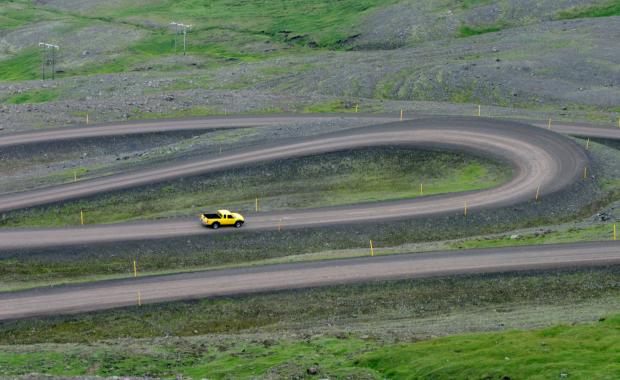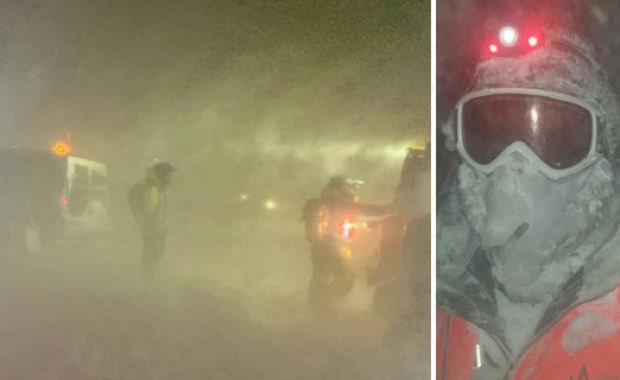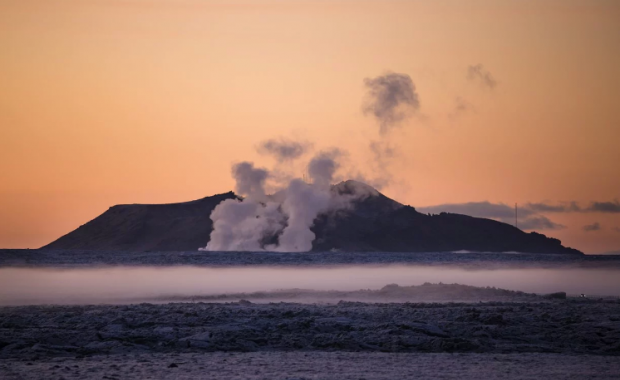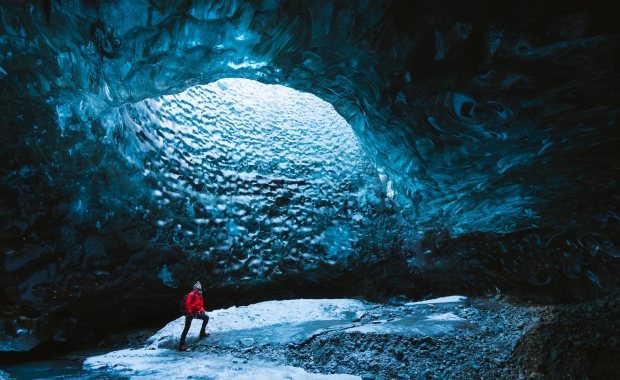First of all, traffic in Iceland is always on the right (as in the States, but unlike in the UK). The general speed limit is 30 to 50 kilometres per hour in residential areas and 90 kilometres per hour on the highway. On good gravel roads, the maximum speed is 80 kilometres per hour. Accidents regularly happen when drivers lose control of their vehicle while driving too fast when tarmac (or asphalt) changes to gravel.
How to become an amazing driver
Elsa Jóna Sveinsdóttir, a professional driving instructor, says there is good reason to warn drivers about the stocky, short-tailed Icelandic sheep that roam the open countryside during summer grazing season. Those four-legged pedestrians can be quite unpredictable and drivers are advised to keep a watchful eye out for them.
“Narrow bends, blind rises, loose gravel, deep potholes, and dodgy road margins can pose a risk when driving on gravel roads. It’s crucial to keep well to the right when navigating these roads. Should the front wheel drift to the edge of a gravel road, ease your foot off the accelerator immediately and with a steady grip on the wheel, steer the vehicle back onto the road,” Elsa Jóna explains.
10 things to keep in mind while driving in Iceland
1. Blind rises. When driving in the more remote parts of Iceland, one is sure to encounter many blind rises. It is important to slow down when nearing a blind rise, or a hilltop, and to keep well to the right side of the road. Never stop the vehicle on top of a hill, or below a blind rise.
2. Single-lane bridges. These are common in Iceland. The rule of thumb is the first vehicle to arrive at the bridge has the right-of-way.
3. Buckle up. All passengers are required by law to use safety belts. These are known to save lives.
4. Lights on. Headlights must be turned on at all times, day and night, all year around.
5. No drinking. Driving under the influence of alcohol is prohibited in Iceland.
6. Stay cool. Slippery roads are the main cause of traffic accidents in Iceland. Should the vehicle start skidding on ice or snow, ease off the accelerator and slowly gear down. Leave a good space between your car and the car in front of you when driving in these conditions.
7. Dangerous roadsides. Wet and steep roadsides can be risky−use caution.
8. Getting stuck. If the vehicle gets stuck in snow, shift into first gear and slowly rock back and forth.
9. Stay on the roads. All off-road driving is prohibited by law. Icelandic nature is extremely sensitive and off-road driving can leave a mark for decades to come.
10. Stay informed. Never head off into the unknown–weather conditions in Iceland can change very quickly. Check the weather forecast before you set off and be well prepared. Keep warm clothing in the car for emergencies.
When driving in Iceland one can easily get distracted by the ever-changing scenery and ethereal beauty of nature. But restrain yourself and concentrate. The narrow gravel roads, tiny one-way bridges, and rogue sheep demand your full attention. So, before you fasten your seatbelt, shift into gear, and step on the accelerator, it’s good to take note of some of the primary traffic rules that apply in Iceland.
First of all, traffic in Iceland is always on the right (as in the States, but unlike in the UK). The general speed limit is 30 to 50 kilometres per hour in residential areas and 90 kilometres per hour on the highway. On good gravel roads, the maximum speed is 80 kilometres per hour. Accidents regularly happen when drivers lose control of their vehicle while driving too fast when tarmac (or asphalt) changes to gravel.
How to become an amazing driver
Elsa Jóna Sveinsdóttir, a professional driving instructor, says there is good reason to warn drivers about the stocky, short-tailed Icelandic sheep that roam the open countryside during summer grazing season. Those four-legged pedestrians can be quite unpredictable and drivers are advised to keep a watchful eye out for them.
“Narrow bends, blind rises, loose gravel, deep potholes, and dodgy road margins can pose a risk when driving on gravel roads. It’s crucial to keep well to the right when navigating these roads. Should the front wheel drift to the edge of a gravel road, ease your foot off the accelerator immediately and with a steady grip on the wheel, steer the vehicle back onto the road,” Elsa Jóna explains.
10 things to keep in mind while driving in Iceland
1. Blind rises. When driving in the more remote parts of Iceland, one is sure to encounter many blind rises. It is important to slow down when nearing a blind rise, or a hilltop, and to keep well to the right side of the road. Never stop the vehicle on top of a hill, or below a blind rise.
2. Single-lane bridges. These are common in Iceland. The rule of thumb is the first vehicle to arrive at the bridge has the right-of-way.
3. Buckle up. All passengers are required by law to use safety belts. These are known to save lives.
4. Lights on. Headlights must be turned on at all times, day and night, all year around.
5. No drinking. Driving under the influence of alcohol is prohibited in Iceland.
6. Stay cool. Slippery roads are the main cause of traffic accidents in Iceland. Should the vehicle start skidding on ice or snow, ease off the accelerator and slowly gear down. Leave a good space between your car and the car in front of you when driving in these conditions.
7. Dangerous roadsides. Wet and steep roadsides can be risky−use caution.
8. Getting stuck. If the vehicle gets stuck in snow, shift into first gear and slowly rock back and forth.
9. Stay on the roads. All off-road driving is prohibited by law. Icelandic nature is extremely sensitive and off-road driving can leave a mark for decades to come.
10. Stay informed. Never head off into the unknown–weather conditions in Iceland can change very quickly. Check the weather forecast before you set off and be well prepared. Keep warm clothing in the car for emergencies.







